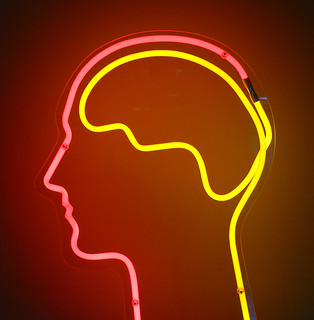One of the most compelling revelations we had when we did the research that went into this book started when we read announcements in brain science that claimed to explain the differences between men and women. A lot of the reports centered around research into the hormone oxytocin, a naturally occurring chemical produced by both men and women, but mostly ignored for the past 100 years. Up until recently, scientists thought oxytocin was solely related to women's health because they had identified its role in breastfeeding, and the birthing process, and bonding with the baby. But when someone labeled it "the love hormone," and neuroscientists started talking about its ability to induce feelings of trust and safety that could impact the financial markets as well as riot control, suddenly oxytocin was a hot topic.
We thought we had an "Aha!" moment when we first read how this primordial hormone and its receptor system explained why women were better at some things than men were, and vice versa. But when we dug deeper, we learned that not only do many feminists cringe at such conclusions (those who have been fighting for decades to show that women are completely equal to men), but the really serious neuroscientists were not the ones making these conclusions.
It was journalists and science reporters who were leaping to the more extraordinary conclusions about oxytocin, so we kept digging until we found someone to interview who really knew her stuff. We went straight to the top and interviewed Dr. C. Sue Carter, Ph.D., whose pioneering research led the way for the social psychology experiments in this new field. She discovered that it was the oxytocin system that explained monogamy in the prairie vole, one of the very few other mammals that practice monogamy besides humans. Her team recorded phenomenal levels of oxytocin in the brains of the prairie voles when compared to other voles or rodents who did not practice monogamy. Oxytocin also explained how much "love" they demonstrated in their family units.
Oxytocin is produced equally in males and females but women are able to use it better, especially in times of stress. Others have concluded this is why in high stress situations like revolution or environmental disasters, you'll often see groups of women who will circle together to come to a solution for the group. They are using the oxytocin their brains are producing to stay calm and focused.
As you say, where men are testosterone-driven -- either after millennia of social conditioning or by predestined genetics, we don't know, but it's true men approach tasks differently than women do, generally with a more goal-oriented end in site. Study after study have shown that when both men and women are present at the board of directors meetings, more compromise happens, and the bottom line of the company grows.
When more compassionate actions are practiced by the human resources department, like providing physical amenities for pregnant employees and generous family care leave for both men and women, productivity and creativity among all employees benefits enormously.
When a prairie vole gives birth, there is such a surge of oxytocin in both the father and the mother that oftentimes, the father will be the first to reach the pup to begin licking and grooming it. Aunts and uncles also pitch in to help, as the young tend to live together in bonded family units. More research is needed, but it's clear that the "love hormone" is designed to help humans get along with each other, and if we can figure out how better to adapt to its power, we might advance to a new kind of humanity.
So, just as in my first answer when looking to the Iroquois for a role model, my response would be: elect more women to positions of power. Look around wherever you have the chance to influence your world, from the county fair and PTA meetings to local and national government. Identify the women whose platforms you can support together with the men who recognize the importance of an equal rights agenda. We want to support anyone who can see that valuing compassion leads to strength.
The more compassion and care we give to young children in their first 5 years, the better developed their brains will be, the better workers they will be, and the more creative will be their solutions for the problems facing the world right now. We need to create more compassionate and highly creative people to envision and create the solutions needed to break out of the box of the materialistic domination paradigm we seem stuck in, and these new patterns start in the home. Our votes need to go to leaders who will support caregiving from the start.
BH: And yes, we do believe that focusing on the Statue of Liberty, particularly in her true role as the American goddess, can help Americans make this shift.
She's taken a lot of flak lately from our current administration who seems hell-bent on reinventing America as the land of the selfish and the me-firsters, but see how resilient she is! She is still standing noble with that torch held high in New York Harbor because as a very effective symbol, she represents whatever is everyone's private notion of the best that America can be.
Next Page 1 | 2 | 3 | 4 | 5 | 6 | 7
(Note: You can view every article as one long page if you sign up as an Advocate Member, or higher).










